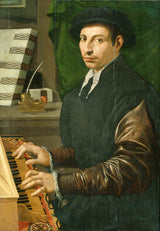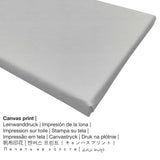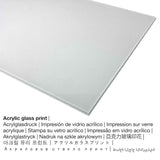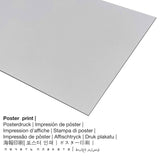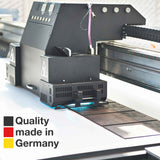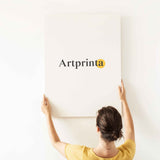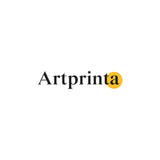Francesco Traballesi, 1554 - Nwoke na-egwu Clavichord - mbipụta nka mara mma
Ụtụ gụnyere. Mbupu gbakọrọ na ndenye ọpụpụ.
Nkọwa ngwaahịa mbipụta dị omimi
Man Playing the Clavichord is a piece of art painted by Francesco Traballesi in 1554. Taa, ihe osise a bụ nke Rijksmuseum's digital collection. Site n'ikike nke - Rijksmuseum (ikike - ngalaba ọha): . N'elu nke ahụ, nhazi bụ Eserese ya na oke akụkụ nke 1: 1.4, nke pụtara na ogologo bụ 29% mkpụmkpụ karịa obosara. Francesco Traballesi was a architect, painter from Italy, whose art style was primarily Mannerism. The European painter lived for a total of 44 years and was born in 1544 in Florence, Firenze province, Tuscany, Italy and deceased in 1588 in Mantua, Mantova province, Lombardy, Italy.
Ozi mgbakwunye sitere na ụlọ ngosi nka (© - site Rijksmuseum - Rijksmuseum)
The klavechordspeler. Portrait of a young man playing a clavichord or spinet with marquetry, turned to face the viewer. In the background, an inkstand and books on a table.
Data ndabere gbasara mpempe nka
| Aha eserese: | "Man Playing the Clavichord" |
| Nhazi: | sere |
| Okwu mkpokọta: | nka ochie |
| Century: | 16th narị afọ |
| Afọ okike: | 1554 |
| Afọ nka: | ihe karịrị 460 afọ |
| Ụlọ ihe ngosi nka / mkpokọta: | Rijksmuseum |
| Ebe ebe ngosi nka: | Amsterdam, Netherlands |
| Weebụsaịtị nke ihe ngosi nka: | Rijksmuseum |
| Akwụkwọ ikike nka: | ngalaba ọha |
| Site n'aka: | Rijksmuseum |
metadata omenka ahaziri ahazi
| Ihe nkiri: | Francesco Traballesi |
| Aliases: | Francesco Traballesi, Trabaldese Francesco, Traballesi Francesco, Tibaldese Francesco, Traballese Francesco |
| okike onye nka: | nwoke |
| Obodo onye nka: | Italian |
| Ọrụ: | onye na-ese ụkpụrụ ụlọ, onye na-ese ihe |
| Country: | Italy |
| nhazi ọkwa: | nna ukwu ochie |
| Ụdị nke onye na-ese ihe: | Omume |
| Oge ndu: | 44 afọ |
| Afọ ọmụmụ: | 1544 |
| Amụrụ na (ebe): | Florence, mpaghara Firenze, Tuscany, Italy |
| Afọ nwụrụ: | 1588 |
| Nwuru na (ebe): | Mantua, mpaghara Mantova, Lombardy, Italy |
Ihe di
The product dropdown menu gives you the opportunity to pick your favorite material and size. You can choose your favorite size and material among the following choices:
- Mbipụta nke aluminom: These are metal prints on aluminium dibond with an outstanding depth effect, which creates a contemporary look throuch a non-reflective surface structure. The Direct Print on Aluminum Dibond is the ideal introduction to art replicas on alu. The bright and white sections of the original artpiece shimmer with a silk gloss but without the glare. Colors are bright and luminous in the highest definition, the fine details of the print are clear and crisp, and there’s a matte look you can literally feel. The direct print on Aluminum Dibond is the most popular entry-level product and is a contemporary way to display artworks, as it draws attention on the artwork.
- Kwaaji: The UV printed canvas mounted on a wood stretcher frame. A printed canvas of your favorite masterpiece will let you turn your very own art print into a large artwork as you would see in a gallery. The advantage of canvas prints is that they are relatively low in weight, meaning that it is easy to hang the Canvas print without the use of extra wall-mounts. Canvas prints are suited for all types of walls.
- Poster (akwa akwa akwa): A poster print is a UV printed flat canvas with a slight surface texture. It is optimally suited for putting your art replica with a personal frame. Please bear in mind, that depending on the size of the poster print we add a white margin of approximately 2-6cm round about the print in order to facilitate the framing.
- Mbipụta enyo acrylic: A glossy acrylic glass print, often named a UV print on plexiglass, makes your favorite original into beautiful home decoration. Your favorite artwork is made with state-of-the-art UV direct printing technology. The great advantage of a plexiglass print is that contrasts and also granular image details become more visible thanks to the very fine gradation of the picture.
Nkọwa ngwaahịa
| Nkewa ngwaahịa: | nka nka |
| Mmeputakwa: | dijitalụ mmeputakwa |
| Usoro mmepụta: | Mbipụta UV ozugbo |
| Mmalite nke ngwaahịa a: | arụpụtara na Germany |
| Stockdị ngwaahịa: | mmepụta ihe na-achọ |
| Eji ngwaahịa emebere: | mgbidi mma, mgbidi gallery |
| Nhazi nka nka: | usoro eserese |
| Oke akụkụ onyonyo: | 1: 1.4 ogologo ruo obosara |
| Akụkụ onyonyo pụtara: | ogologo bụ 29% mkpụmkpụ karịa obosara |
| Akụrụngwa ị nwere ike ịhọrọ: | Mbipụta kwaaji, mbipụta enyo acrylic (nwere ezigbo mkpuchi iko), mbipụta ọla (aluminium dibond), mbipụta akwụkwọ mmado (akwụkwọ kwaaji) |
| Mpempe akwa akwa (akwa akwa na etiti ihe ndọtị) nha: | 50x70cm - 20x28", 100x140cm - 39x55" |
| Mbipụta iko acrylic (nwere ezigbo mkpuchi iko) dị iche iche: | 50x70cm - 20x28", 100x140cm - 39x55" |
| Mpempe akwụkwọ mmado (akwụkwọ kwaaji) nha dị iche iche: | 50x70cm - 20x28" |
| Mbipụta aluminom (aluminium dibond ihe) dị iche iche: | 50x70cm - 20x28", 100x140cm - 39x55" |
| ụba: | na-enweghị etiti |
Legal disclaimer: We try all that we can in order to depict the art products as clearly as possible and to demonstrate them visually in our shop. Nevertheless, the tone of the print materials and the printing may diverge to a certain extent from the representation on your monitor. Depending on the screen settings and the condition of the surface, not all colors will be printed as realistically as the digital version on this website. Given that all our fine art prints are printed and processed by hand, there might also be minor deviations in the motif's size and exact position.
© Nwebiisinka - ikike ọgụgụ isi nke, Artprinta (www.artprinta.com)

